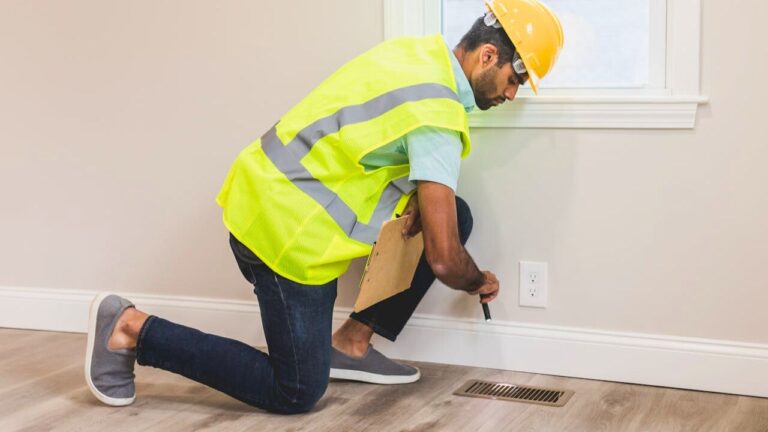Take care of these little repairs now or you’ll be paying $1,500 later
Putting off repairs feels harmless at first—especially when it’s something small or out of sight—but those “we’ll get to it later” fixes can snowball into major expenses fast. A $40 part can turn into a $1,500 job once damage spreads or other systems start failing. Staying on top of these early saves a lot more than money—it saves stress, time, and sometimes even your home’s structure. Here are the kinds of repairs you don’t want to ignore for another season.
A Leaky Faucet

A slow drip might not seem like much, but that constant leak can waste hundreds of gallons of water every month and wear down your fixtures. Left alone long enough, it can damage the sink base, cause rot, and even lead to mold growth underneath.
Replacing a worn-out washer or cartridge is usually a $10–$20 fix. Wait too long, and you might be looking at replacing cabinets, countertops, or flooring—all of which can easily hit four figures.
Clogged Gutters

When gutters fill up with leaves and debris, water has nowhere to go but down your siding and into your foundation. That leads to rot, leaks, and even structural damage if the soil around your home starts to shift.
Cleaning them out twice a year takes less than an hour and costs nothing if you do it yourself. Ignore them for a few seasons, and you could be paying thousands for foundation repairs or water damage restoration.
Cracked Caulk Around Windows

Cracked or missing caulk may not grab your attention, but it lets in moisture and air leaks that drive up your energy bill and cause wood rot. Once the frame starts softening, replacement is the only option—and that’s where the real expense begins.
A $5 tube of caulk and 30 minutes of work can protect your window frames for years. Wait too long, and one damaged window could lead to a full frame rebuild.
Small Roof Leaks

That tiny ceiling stain probably doesn’t look urgent, but once water finds its way under shingles, it spreads fast. It can rot your roof decking and insulation, and if it reaches drywall, you’ll be dealing with repairs inside and out.
Most small leaks can be patched for under $200. But once rot or mold sets in, the job easily jumps into the thousands. Early inspection after storms makes all the difference.
Running Toilets

A running toilet can waste up to 200 gallons of water a day—adding $40–$60 a month to your bill without you realizing it. The problem is usually a cheap flapper or fill valve that takes minutes to swap out.
Ignore it long enough, and you risk damaging your septic system or well pump if you’re on one. Not to mention the headache of tracking down leaks once things get worse.
Cracked Driveway or Sidewalk

Small cracks in concrete might seem cosmetic, but water gets in, freezes, and expands—making them bigger every time. Before long, you’re dealing with uneven slabs or major foundation shifts.
Sealing cracks with filler costs about $10 and an hour of work. Replacing an entire section of driveway or sidewalk? That can easily run you over $1,000.
Peeling Exterior Paint

Paint is more than looks—it’s your home’s first line of defense against the weather. When it starts peeling, moisture sneaks into the siding or trim and causes it to rot from the inside out.
Repainting small problem areas early keeps wood dry and protected. Let it go, and you’ll be replacing boards, priming, and repainting the entire side of your house.
Loose Deck Boards or Railings

A wobbly railing or loose board is a safety hazard waiting to happen. Once water seeps into the gaps, it starts eating away at the wood and fasteners underneath.
A few screws and a bit of sealant fix the problem for next to nothing. If you wait until the damage spreads, you could end up needing major structural work or a full deck replacement.
Failing Water Heater

If your water heater is making noise or struggling to keep up, don’t ignore it. Sediment buildup inside the tank reduces efficiency and eventually eats through the metal. Once it leaks, it can flood an entire room in minutes.
Flushing your tank once a year and replacing small parts like the anode rod can add years to its life. Skip maintenance, and that $20 part turns into a $1,500 emergency replacement.
Unsealed Gaps Around Doors

Gaps around exterior doors let in drafts and humidity that make your HVAC system work harder. Over time, that constant cycling wears out your unit and adds hundreds to your annual energy bill.
Weatherstripping is one of the cheapest fixes you can make—usually under $20. If you let it go too long, you’ll be replacing door frames or repairing warped floors from moisture creeping in.
*This article was developed with AI-powered tools and has been carefully reviewed by our editors.







